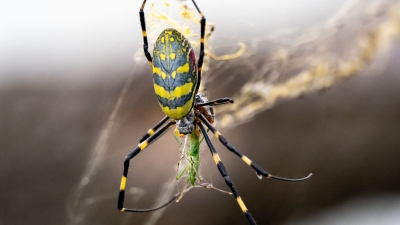
Any mention of invasive species- both plants and animals- is likely to draw attention to their negative impact. From disease to decimation of native species, invasive species the world over are notorious for altering and causing extensive damage to local ecosystems. But here’s someone who’s colonised a new region in a short time and is still winning hearts and brownie points for holding the promise of actually helping the local ecosystem. Meet the Joro spider!
Native to Japan, Joro spiders arrived in the U.S. roughly a decade ago. Back then perhaps they didn’t cause much alarm among researchers because they expected these spiders to be just like their cousins, the golden silk spiders, who came to “the southeastern US some 160 years ago from the tropics. Despite having been around for more than a century-and-a-half, the golden silk spider has never “been able to spread beyond the Southeast due to its vulnerability to cold” Though the two spiders are related, they couldn’t be anymore different in some crucial aspects. The Joro spider “has about double the metabolism of its relative, has a 77% higher heart rate and can survive a brief freeze that kills off many of its cousins. These findings mean the Joro spider’s body functions better than its relative in a cold environment”. A new study has revealed that they are likely to go beyond the Southeast of the US and colonise the whole of the country’s East Coast in a couple of decades. And researchers are still not alarmed! But why?
Because the Joro spider has a lot going for it-“it could provide a hearty meal for native predators, such as mud dauber wasps, which hunt spiders. Other beneficiaries could include local lizards” and birds. Comfortingly, they are not aggressive towards humans, “nor are their fangs big enough to pose any kind of threat”. In fact, one of the researchers of the new study feels that the Joro spiders need not be killed because they’re really not out to get us”. Also, it’s possible that just like its cousin, the newest arachnid invader would integrate itself into the ecosystem and cause no harm!
Picture Credit : Google




